LED lamps today are considered the most economical and durable compared to the rest. And although their cost is still relatively high, they are increasingly replacing incandescent and fluorescent lamps.
Why is this happening?
Mainly for two reasons:
1. incandescent lamps burn out quickly and have low efficiency,
2. fluorescent lamps require special disposal, as they have mercury vapor in the flask. In addition, breaking such a lamp at home, you can expose your household to the effects of poison.
There are no such problems with LEDs. Throw them anywhere and smash them to health, they do not pose any danger, except for glass fragments.
At the same time, there are a lot of companies producing these products, and choosing a quality product among them is sometimes not an easy task.
Yes, and the eminent brand does not guarantee full confidence in the long uninterrupted operation of the device.
What to do if the lamp has stopped shining, and it is impossible to change it under warranty. You can try to repair it yourself. Its device is not complicated and does not require special tools for disassembly.
This article will describe the disassembly and repair of a standard, budget-class LED lamp. In addition, one of the options for failure and its elimination is given.
Of the tools you need only a screwdriver, a knife and possibly a two-handed indicator.
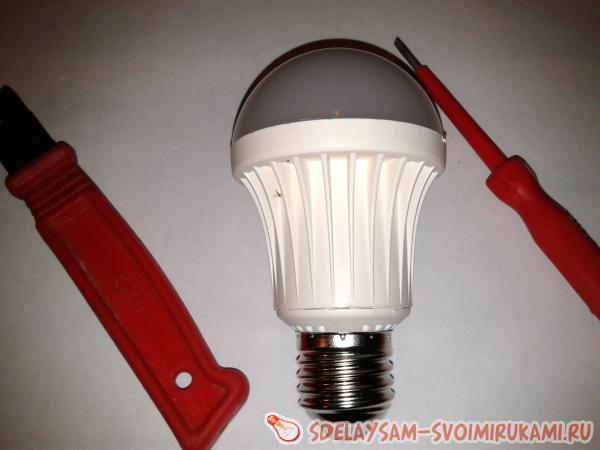
If there is no indicator, any "dialing" will do.
So, let's start by removing the diffuser. To do this, insert the knife blade into the gap between the glass and the plastic case and gently move it in different directions.
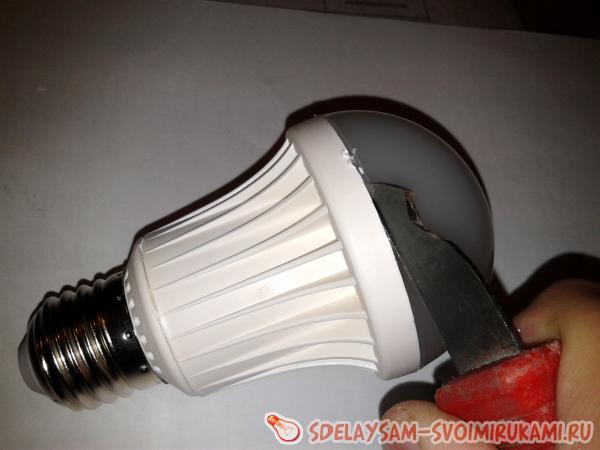
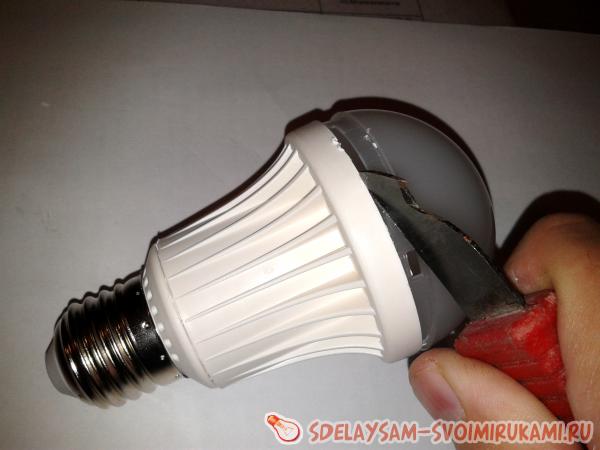
The diffuser should come out of the latches and be removed without problems.
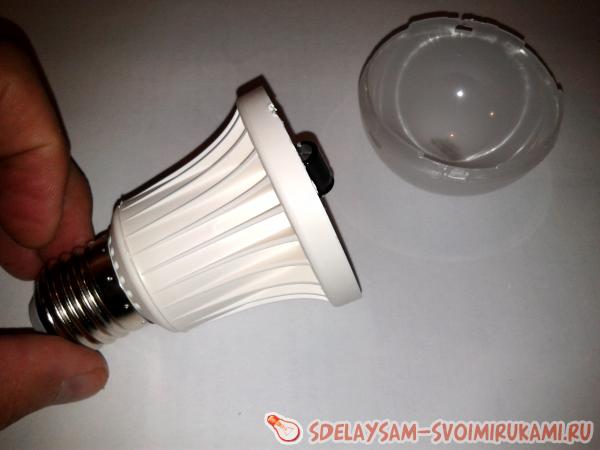
A board with LEDs and a rectifier opens up.
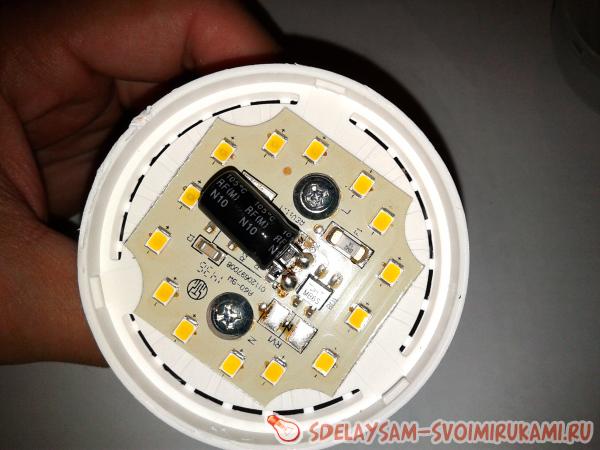
There is also a fuse on the board. To make sure that it is not burned out, we connect the ends of the dialing to its conclusions. Light or sound indication of the device will show its serviceability. If it doesn't show, you'll have to replace it.
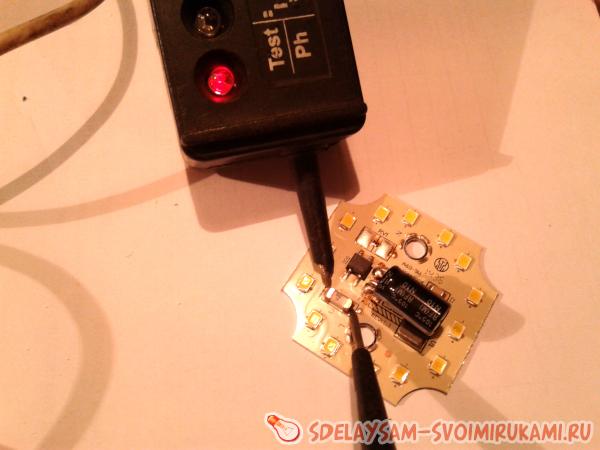
When the fuse is intact, we disassemble further.
At the beginning, we unscrew the two screws securing the board, after which it can be easily removed.
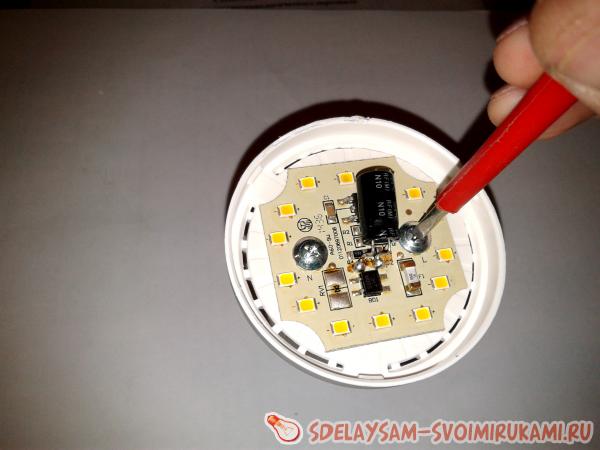
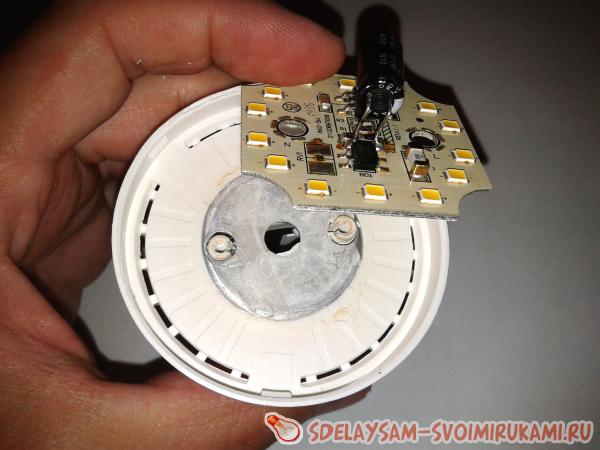
Under the board is a radiator in the form of a metal flask.

The heat transfer of the board to the radiator is improved by thermal paste applied to both surfaces.
If necessary, it can be changed if it is dry. A regular thermal paste for a computer processor will do.
To continue disassembly, pull on the top of the lamp housing and it can be easily removed.
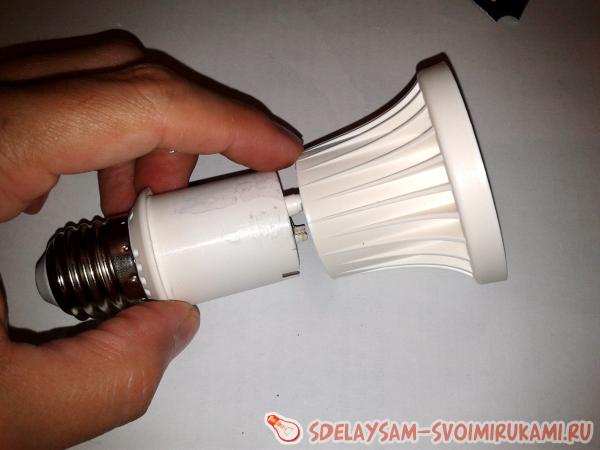
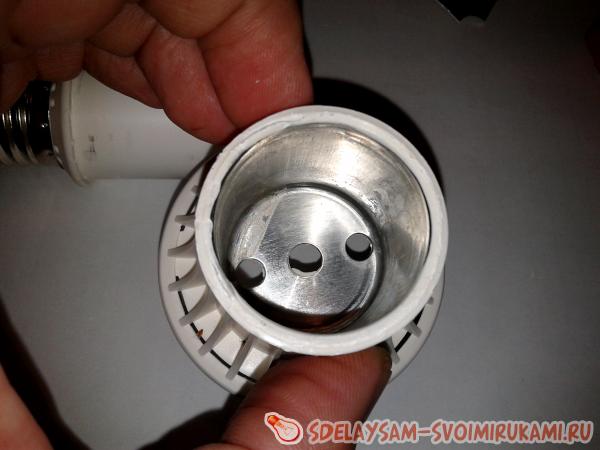
In the lower part of the case with a cartridge, you can see two metal strips, one end connected to the base, and the other with holes - where the screws go.
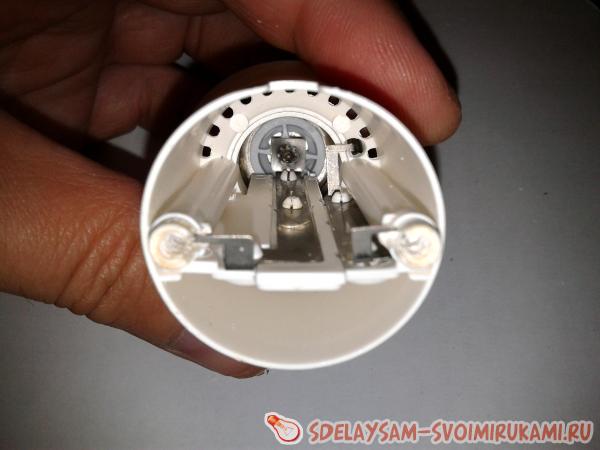
Thus, through the screw, voltage is transmitted from the base to the board.
The problem turned out to be that over time, the contact bent and did not come into contact with the board screw. Hence the absence of the glow of the lamp.
To eliminate this malfunction, simply bend the end of the contact strip with a screwdriver or tweezers.
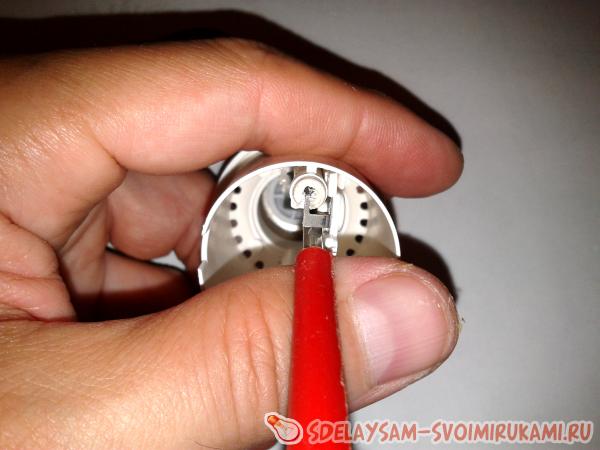
Of course, you can do it better, for example, by soldering the wires to the board and the base. Then there will be no problems with contact. But more often than not, the first simple option is enough.
Now you can assemble the lamp in reverse order. We put on the upper part with a radiator so that two contacts fall into the holes.
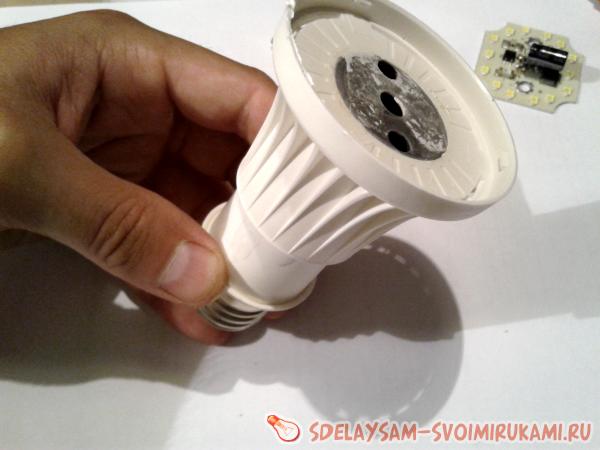
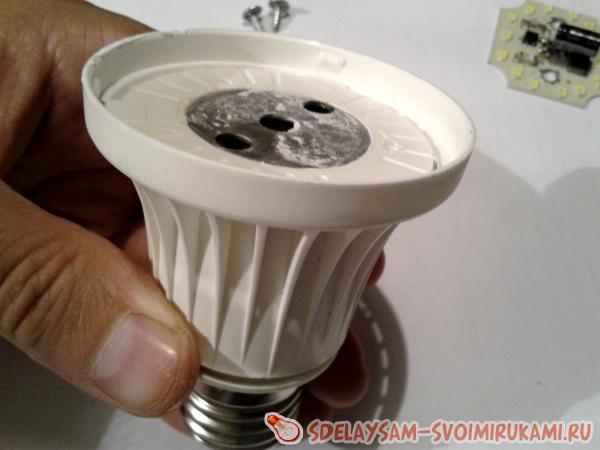
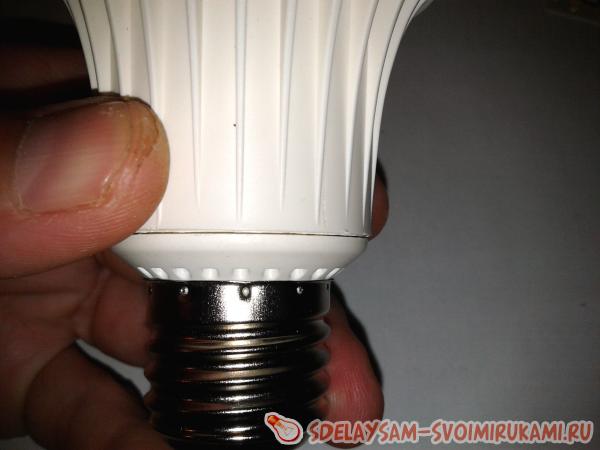
Next, install the board and twist it.
